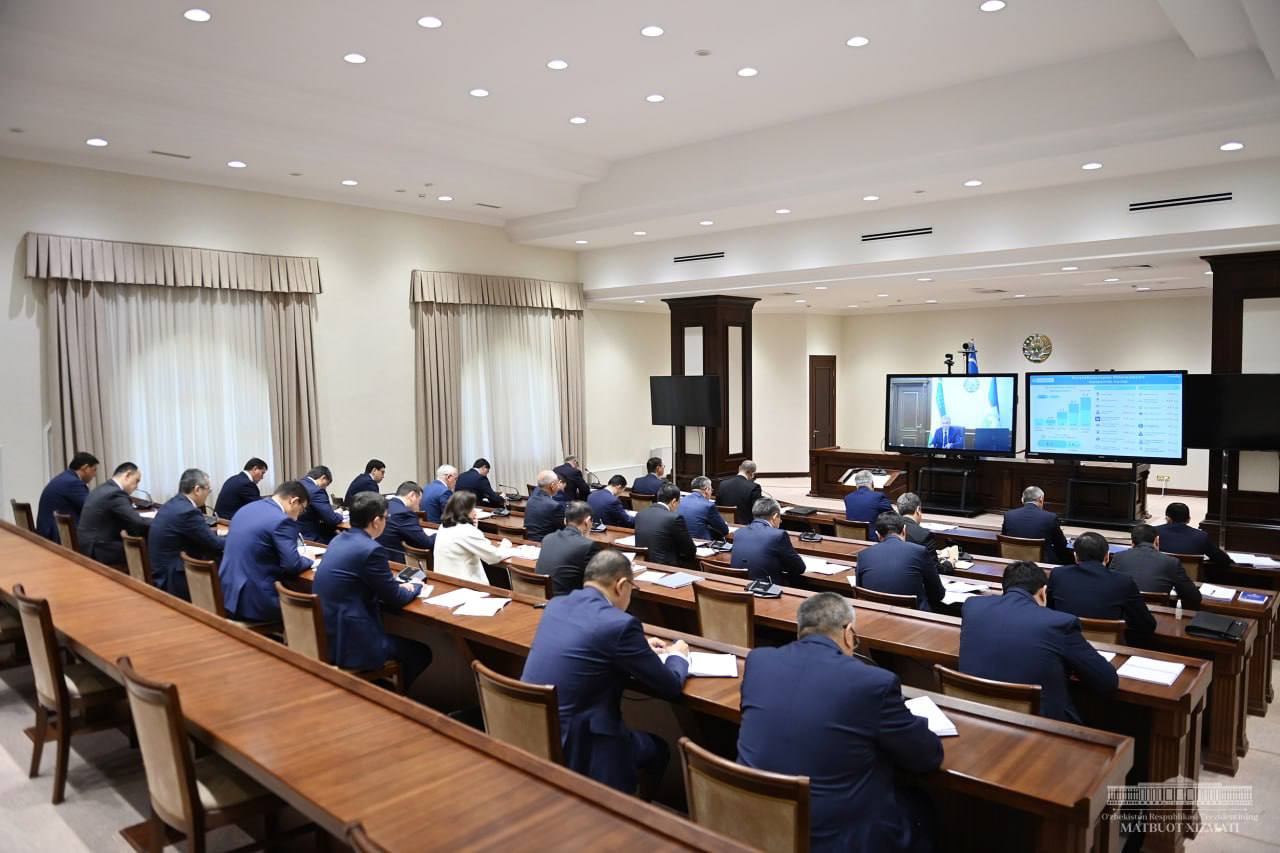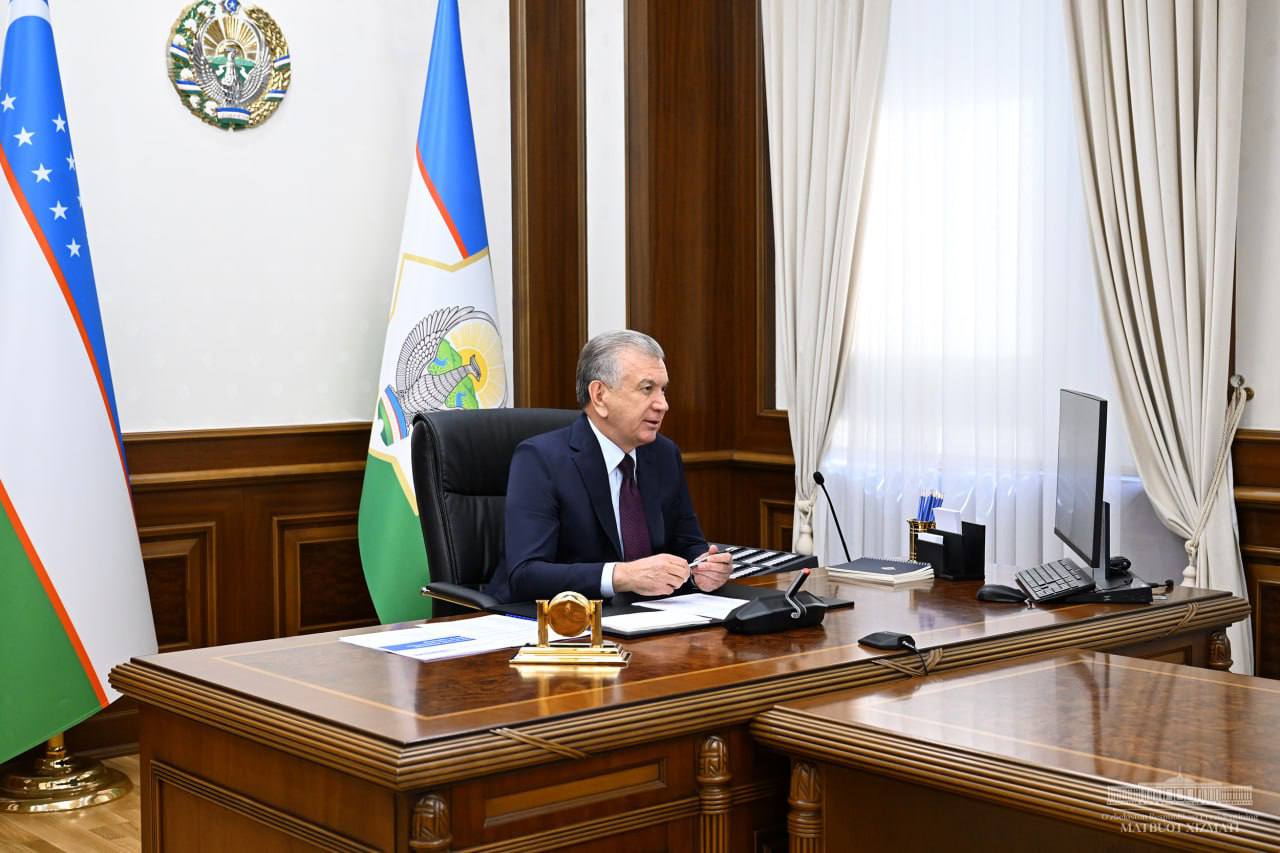
24.03.2023
On March 24, President Shavkat Mirziyoyev held a meeting to discuss the state property privatization process and plans for the current year.
Privatization reduces the State’s presence in the economy and creates conditions for increasing the number of private owners. To this end, our country is undertaking extensive work in this direction. Thus, while the State assets worth 1.2 trillion Uzbek soums have been sold over the past decade, in 2022 this figure reached 11.3 trillion Uzbek soums. That is, over the past year the effect in this sphere has decupled compared the past decades.
The efficiency of privatized facilities is also growing. For example, on the basis of the Andijan experimental plant, which was inactive for many years, textile enterprise was organized with $18 million worth of investments, a thousand jobs were created, and $40 million worth of products were exported. A foreign investor purchased the Kokand Super-Phosphate Plant, and invested $40 million, quadrupling the output. The sale of the state share in Ipoteka Bank for $324 million and in Coca-Cola Uzbekistan for $252 million were also the largest deals of recent years.
The privatization process is not yet moving dynamically in all regions and industries. For instance, in Tashkent Region 112 facilities were realized on the basis of which 150 business entities and more than a thousand new jobs have been created. However, in Karakalpakstan, Kashkadarya, Namangan, Surkhandarya and Syrdarya regions from the property put up for sale last year was not sold even 30 percent. The privatization of the assets of JSC Uzdonmakhsulot is the slowest in terms of sectors.
In general, the inventory of more than 30 thousand state-owned objects at the beginning of this year showed that there is still much to be done in the sphere of privatization.
In this regard, today, by the decree, the President approved a New Privatization Program, which defines the activities in three areas - the sale of shares, real estate and organization of an IPO.
First, state-owned stakes in 1thousand companies will be put up for sale.
Second, 1 thousand real estate objects will be put up for public auction. They include 600 hectares of land and buildings with a total area of 1 million square meters. Most importantly, they are provided with infrastructure and are located near the settlements.
In order to expedite the implementation of these facilities, the period of preparation for sale will be reduced from the current 80 days to 48 days. It will be allowed to put up for sale objects with an area of up to 2,000 square meters at the entrepreneurs’ direct application.
Third, the state share in 40 large enterprises and banks will be realized through a “people's IPO”. In particular, for the first time, the population will be offered shares with an average yield of 2 percent of such large enterprises as Navoi and Almalyk mining and smelting, Uzbek metallurgical plants, Uztelecom, the National Bank, Sanoatkurilishbank. The population will have the opportunity to buy shares directly from enterprises. Companies whose shares are acquired through an IPO will spend at least 30 percent of their net profit on dividend payments for five years.
Third, the state share in 40 large enterprises and banks will be realized through the “people’s IPO”. In particular, for the first time the population will be offered shares with an average yield of 2 percent of such large enterprises as the mining and metallurgical plants of Navoi MMC, Almalyk MMC and “Uzmetkombinat”, as well as “Uztelecom”, “Sanoatqurilishbank”. The population will be able to buy shares directly from enterprises. The companies, whose shares are purchased on the IPO, will spend at least 30 percent of their net profit on dividends within five years.
It is estimated that the Program will generate 13 trillion Uzbek soums in revenue this year, will facilitate creation of 3 thousand new enterprises and 50 thousand workplaces.
These tasks were discussed in terms of regions and industries. Responsible persons presented information on implementation of the Program.
The importance of broadly informing the public and entrepreneurs about the possibility of privatization of state property, assistance in drawing up documents was emphasized.
The officials were instructed to bring large state-owned companies to the capital market and to increase the efficiency of investment projects.









